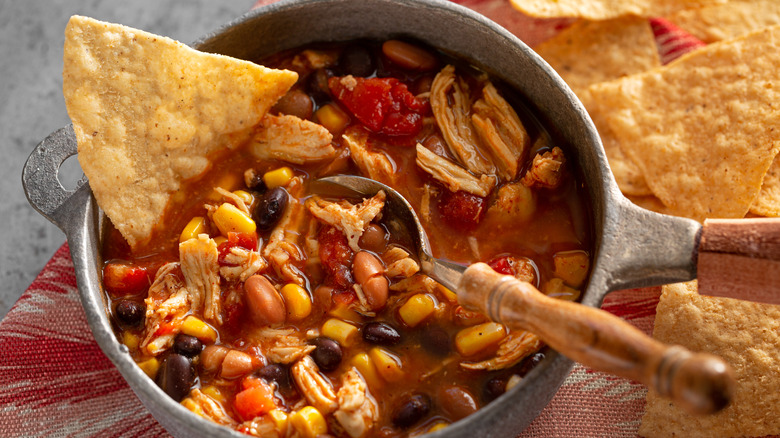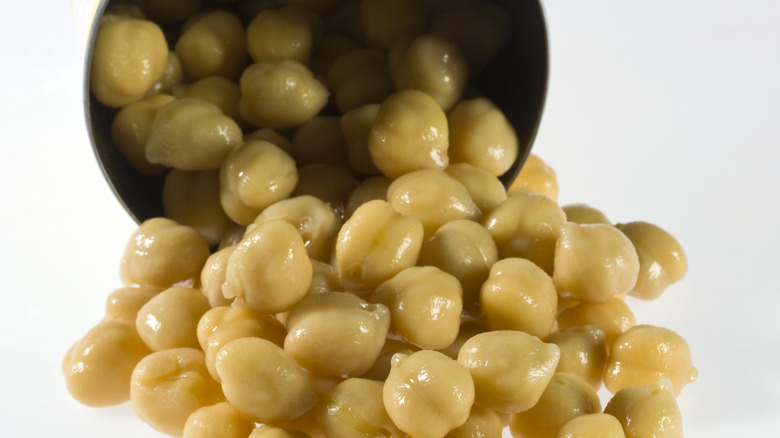Why You Shouldn't Wait Until The Last Minute To Add Canned Beans To A Dish
Anyone whose favorite recipes include soups and stews (how else do you get through fall and winter?) knows that dishes of this type taste better the following day. That's because it takes a minute for the flavors to mellow, blend, and develop. In other words, just because something's fully cooked, doesn't mean it's fully flavored. The same goes for adding canned beans or lentils to, well, any recipe that calls for canned beans. Ignore any advice to toss them in at the last minute, because you'll be cheating your tastebuds. Let them simmer with the other ingredients in order to assume the character of the dish.
We all know why many recipes call for canned beans: it's a legit time-saving device. Cooking dried beans from scratch can involve hours of soaking and cooking — a process that would effectively transform any other soup or stew ingredients to a puree. Canned beans are cheap, perfectly cooked, and ready to go. No judgment here! (Having said that, figure out a way to cook beans from scratch if you possibly can. They're just...better, especially if you soak and cook them with aromatics.)
You might be thinking, "Why simmer cooked beans? Haven't they absorbed all the liquid they need already?" Not quite! They've got a way to go before they turn to mush; consider this a flavor-enhancing opportunity.
Bean-shaped flavor bombs
Besides the beans, a can of cooked beans includes liquid and a kind of goop composed of water, salt, and bean starch. There's no reason not to use this liquid, with the proviso that it's quite salty (the salt acts as a preservative). Are there any other ingredients? No! Are commercially-canned beans and legumes usually cooked with a lovely blend of aromatic vegetables and spices? No, they are not! Dried beans absorb water, but cooked beans do as well, at least until they're saturated and burst. That process takes a while.
If you're making a soup or stew, you're likely to start with stock or bouillon. Either of these typically include aromatics like onion, garlic, herbs and spices. Let's say you're making chili and have already browned your bacon and beef. All of those beautiful flavors are going to be absorbed into your cooked beans during simmering (and resting overnight in the refrigerator). Even a half-hour of simmering after adding the cooked beans will make all the difference in the world. Most importantly, the beans will take on the specific flavor profile of your dish. Now, you no longer have cooked black and kidney beans. You have an integral part of a Southwest chili, redolent with cumin, tomatoes, and poblano chili.

